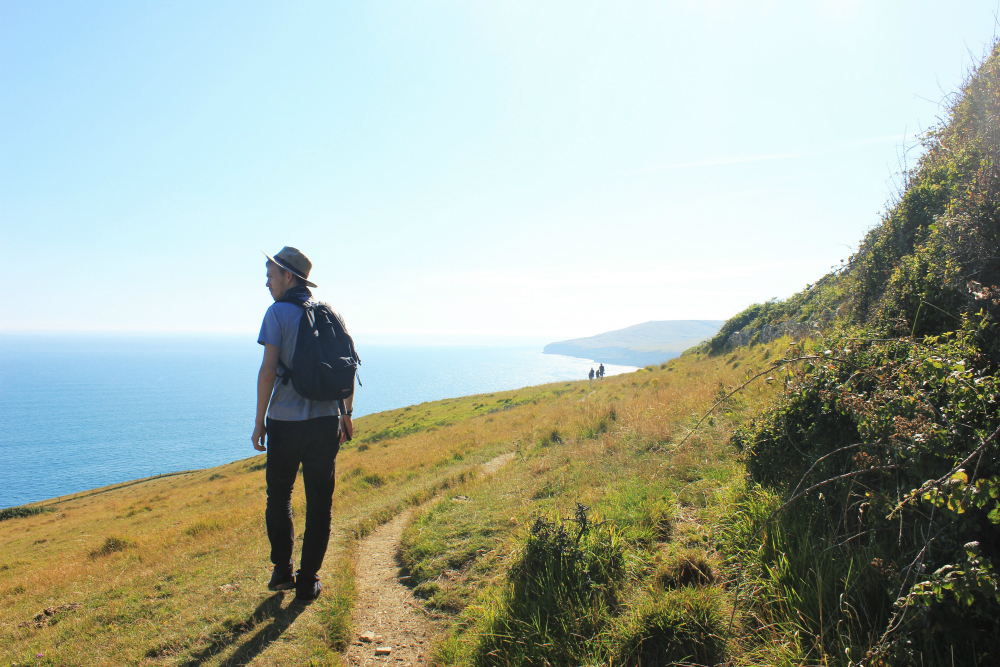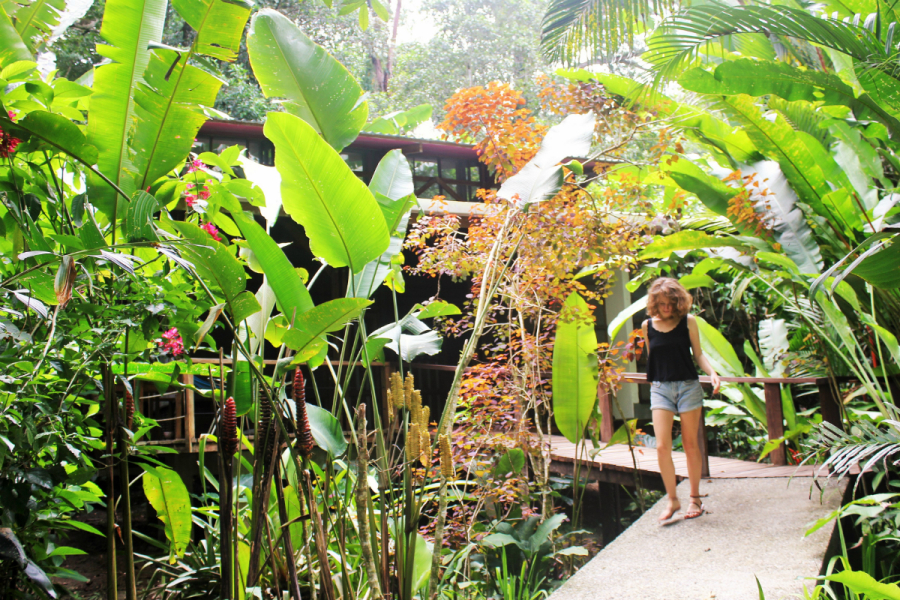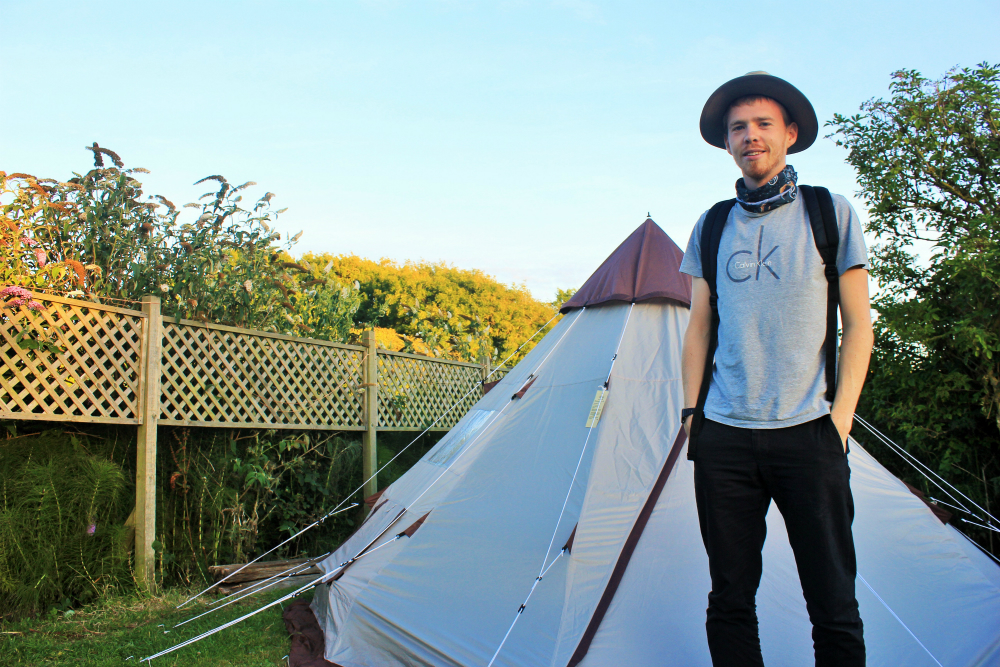Sustainable travel should be the only way we travel. From excessive air travel that causes harmful CO2 emissions to package holiday resorts that are built on natural areas, international travel and tourism are far from sustainable.
Our world has finite resources. There are only so many beautiful, natural, untouched places on our planet and mass tourism threatens their existence. Nature, culture and history should be preserved, not commodified.
Unfortunately, many travellers and travel industry operators remain in denial about how limited our world’s resources are and how tourism is negatively affecting the environment, local cultures and communities. That’s where sustainable travel comes in.
What is Sustainable Travel?
Sustainable travel means finding a way that tourism can be maintained long-term without harming natural and cultural environments. Sustainable travel should minimise the negative impacts of tourism and ideally be beneficial to the area in which it takes place.
The World Tourism Organization defines sustainable tourism as “development [which] meets the needs of present tourists and host regions while protecting and enhancing opportunity for the future. It is envisaged as leading to management of all resources in such a way that economic, social, and aesthetic needs can be fulfilled while maintaining cultural integrity, essential ecological processes, biological diversity, and life support system.”
Sustainable travel is about valuing the environment and looking after our natural resources. Travellers need to be more aware of pollution levels caused by travel and how that affects the environment and local wildlife. They also need to be aware of how tourism affects local people, businesses and native cultures.
There is crossover in definition between sustainable travel, responsible travel, eco tourism and green travel. These terms encompass the idea of being more conscious of how we travel. They seek to minimise negative impacts on the environment and aim to have a positive impact for local communities and economies.
The Three Pillars of Sustainability
The concept of sustainability has three key principles, which are know as the Three Pillars of Sustainability.
The Environmental Pillar – The environmental pillar focuses on reducing negative impacts on the environment and wildlife from travelling. This includes minimising our carbon footprint, especially from air travel, water usage, packaging and plastic waste, and not disturbing wildlife. As sustainable travellers, we can have a simple positive effect by carrying our own reusables. We can look for hotels and restaurants which recycle and are built from sustainable materials. We can research wildlife tourism to seek out responsible tour operators.
The Social Pillar – The social pillar is about our impact on local people and communities. This includes supporting businesses that are run by, employ and support local people, as well as community tourism projects, NGOs, social enterprises and charities. Responsible travellers can look for opportunities to be involved in these types of projects and be aware of who businesses employ, whether they’re fairly paid and whether their work environment is safe.
The Economic Pillar – Traditionally, the economic pillar refers to businesses being profitable in order to be sustainable. However, when it comes to sustainable travel, we can apply the economic pillar to using our money to positively contribute to the local economy. As tourists, we can give our tourist pound to locally-run hotels, restaurants and tour guides to support the local economy.
Sustainable Travel and the Environmental Issues of Tourism
Tourism relies on burning fossil fuels, which contributes to climate change. It’s predicted that 40% of the world’s carbon emissions will be generated by tourism by 2050. To break this down, right now 72% of tourism’s CO2 emissions come from transportation, a further 24% from accommodation, and 4% from tourism activities. The environmental issues caused by tourism cannot be overlooked.
The problem is that while our environmental conscious tells us we should moderate how often and how far we fly, we rarely do. Many of us are ‘binge flying’ – that is flying far more often than is necessary just because we can. We have the time, the money and the desire to travel abroad. Some of us have an almost “insatiable” appetite for travel — and us digital nomads are particularly guilty here.
I’ve discussed whether air travel can really be sustainable and ways to mitigate the negative impacts of air transport before, but it’s important to remember that the choices we make when we’re at our chosen destination affect the environment too. Many destinations do not have regulations or strategies in place to cope with rapid development and overcapacity which is caused by increased tourism. Quite often foreign investors will come, build and leave chaos that the locals have to tidy up — including issues with waste, carbon and water.
As tourists, we should be mindful of how we travel and our impact when we arrive in a destination.
Sustainable Travel and the Environmental Issues of Tourism
Tourism relies on burning fossil fuels, which contributes to climate change. It’s predicted that 40% of the world’s carbon emissions will be generated by tourism by 2050. To break this down, right now 72% of tourism’s CO2 emissions come from transportation, a further 24% from accommodation, and 4% from tourism activities. The environmental issues caused by tourism cannot be overlooked.
The problem is that while our environmental conscious tells us we should moderate how often and how far we fly, we rarely do. Many of us are ‘binge flying’ – that is flying far more often than is necessary just because we can. We have the time, the money and the desire to travel abroad. Some of us have an almost “insatiable” appetite for travel — and us digital nomads are particularly guilty here.
I’ve discussed whether air travel can really be sustainable and ways to mitigate the negative impacts of air transport before, but it’s important to remember that the choices we make when we’re at our chosen destination affect the environment too. Many destinations do not have regulations or strategies in place to cope with rapid development and overcapacity which is caused by increased tourism. Quite often foreign investors will come, build and leave chaos that the locals have to tidy up — including issues with waste, carbon and water.
As tourists, we should be mindful of how we travel and our impact when we arrive in a destination.
25 Ways To Be a Sustainable Traveller
As travellers and tourists, we need to take responsibility for advocating sustainable travel and tourism. This isn’t going to happen overnight. There isn’t a magical solution to solve the problems associated with tourism. But we can work towards better, more sustainable travel. Here are some tips for ways we can be more sustainable travellers:
Transport
1. Consider the most sustainable form of transport to get to your destination
Depending where you’re going, you may have the option to fly, drive or take a train or coach. Weigh up your options. If you’re travelling in a group, it makes sense to car share whereas if you’re travelling on your own it may be greener to fly or take the train. Taking the train or bus is often the more sustainable option over flying or driving by car, but it depends on the route.
2. Take direct flights where possible
Look for the shortest flight path to your destination. Take offs and landings cause most of a plane’s carbon emissions, so it’s best to take a direct flight and avoid changes or stop-overs where possible.
3. Fly economy class
Flying in business class or first class means you have more space per passenger. This can result in a 5x larger carbon footprint. Take the economy seat because it better for your budget and the environment.
4. Use the most sustainable form of transport when you’re at your destination
When you’ve arrived in your destination, go by foot or bike whenever possible. These are the greenest transport options. Use public transport, minibuses or car shares to get around instead of private cars when you’re going further.
5. Be a slow traveller
Mitigate the negative impact of air travel by flying less often and staying for longer in destinations. Being a slow traveller has many benefits and helps you to travel more sustainably.

Accommodation
6. Stay in locally-owned accommodation
Support local business owners by opting to stay in locally-owned accommodation. This can include guesthouses, B&Bs, Couchsurfing and Airbnbs. Read the ‘about’ pages on hotel websites and check out the host’s profile on Airbnb to get a better idea of who owns and runs the accommodation. It’s more sustainable if your money contributes to the local economy, rather than being redirected out of the local economy by foreign-owned hotels and resorts.
7. Check for green certifications at hotels and hostels
Look for accommodation with a commitment to sustainability initiatives. These may include solar power, energy-efficient lighting, recycling and so on. Find out whether a hotel employs local staff, source their food locally and use locally sourced building materials and decor.
“Search for eco hotels which are designed and built sustainably,” says Amruta Kshemkalyani, a sustainability professional and founder of Sustainability Tribe. “There are standards and certifications for sustainable hotels and resorts like Green Globe and Green Key.” You can look for these certifications on hotel and hostel websites.
When we travelled in Costa Rica, we stayed in a number of eco-lodges that were built and operated in a sustainable way (our favourite was La Kukula!) Watch out for ‘green washing’ — unfortunately many hotels have labelled themselves green without actually putting sustainability initiatives in place.

8. Avoid large resorts
Large resorts have negative impacts on the local environment due to their water and energy consumption. Washing towels and changing bed sheets daily are common in large resorts and waste energy and water. Many resorts also concrete over large areas of natural habitat to build guest rooms and swimming pools.
9. Avoid all-inclusives
All-inclusive package holidays mean you pay up-front for your accommodation, food and activities. This means tourists have little incentive to go elsewhere and often do not go out to local restaurants, hire local tour guides or participate in cultural activities. Resort accommodation in all-inclusives tend to be foreign-owned. This means tourist money doesn’t benefit the local economy. All-inclusives are not sustainable.
10. Go wild and camp
If you’re committed to sustainable travel accommodation and love the outdoors, then camping is another great accommodation option. We have only camped at a few odd times – such as at Dancing Ledge last summer – but can definitely see the environmental benefits.

Sustainable Tours, Activities & Voluntourism
11. Use sustainable tour operators with green accreditations
Do your research before booking tours. Look for accreditations such as GSTC, Green Globe, Rainforest Alliance, EarthCheck, Green Tourism Business Scheme (UK) and other regulatory bodies.
Read reviews on third party websites such as Google, TripAdvisor and TrustPilot reviews. I often specifically read any negative reviews to check the concerns of other travellers.
Read reviews and blog posts from travel bloggers who you trust. If you can, get in touch with the tour company before hand to ask them about their policies if it’s unclear from their website.
12. Watch out for ‘green washing’ by tour operators
Green washing is when a company makes unsubstantiated claims about their green credentials to appear more environmentally friendly than it really is. How can you identify companies which might be green washing?
“Use external resources to help vet sustainable businesses and destinations,” advises Eytan Elterman, Chief Impact Officer at Lokal Travel. “Research whether the country has a certification process; for example Costa Rica has a system where they give sustainable businesses a rating, from 1 to 5 leaves. Colombia is also emerging as a country where the government is helping certify sustainable travel businesses.”
“There are also independent organisations that help this process, for example the Global Sustainable Tourism Council is a leader in providing a global standard for sustainable tourism,” add Eytan.
13. Only participate in responsible wildlife tourism
Avoid any wildlife tours that promise up-close encounters with animals, as these may be unethical. You can usually get a sense of whether an animal tourism activity may be unethical based on the interaction with the animals, especially if the animals are not used to human contact. If you’re allowed to touch, cuddle or ride the animals, this is a bad sign.
Look for tours that won’t disturb wildlife and that ensure you are a certain distance away from any animals. Do your research into each specific type of wildlife tourism to ensure it is responsible. I also recommend reading Responsible Travel’s article on wildlife tourism issues.
14. Snorkel and scuba dive responsibly
If you’re snorkelling or scuba diving, be careful not to tread on the coral as this can damage the fragile ecosystem. 25% of coral reefs worldwide are now damaged beyond repair. If we want to preserve our beautiful reefs, we must snorkel and scuba dive responsibly. When you snorkel or dive, go with smaller groups to avoid overcrowding. Do not try to touch or feed fish or animals. Make sure to wear reef-friendly sunscreen. Many supermarket shelf sunscreens contain titanium dioxide. This mineral does not biodegrade and it reacts in warm seawater to form hydrogen peroxide which is harmful to all sea life.
15. Volunteer with NGOs and Join Community Tourism Projects
Take opportunities to involve yourself in projects with NGOs and community tourism organisations. These may be volunteering opportunities or a chance to learn about local life and practices. Always research volunteering opportunities and the organisers behind them to ensure that your time and money will be positively contributing to the place and/or people you are visiting. We’ve had great experiences with Local Alike in Thailand and De La Gente in Guatemala.
Local Environment
16. Eat in restaurants and cafes owned by locals
As with accommodation, spend your tourist dollar in restaurants and cafes run by locals. In our experience, this is a great way to meet locals who are enthusiastic about you trying their traditional food. Not to mention that home-cooking is the best, so if you can find small hole in the wall places or join sharing economy apps like EatWith where you can have dinner with a local family, you’ll most likely be eating more delicious food too. Avoid international food chains like McDonald’s where your money doesn’t enter the local economy.
17. Eat local cuisine
“Eat local cuisine, made from locally sourced ingredients,” says Guillermo Jaques, founder of Barcelona Slow Travel. “And if it’s organic, and comes from small farmers, even better!”
18. Don’t be (too) afraid of eating local street food
Street food vendors are often locals cooking up their own homemade dishes. We’ve eaten some of our favourite dishes abroad from street food carts. Be careful of anywhere that looks unsanitary, as you don’t want to get food poisoning.
19. Buy locally grown food and shop in local markets
Eat locally grown food from local producers. Avoid imported foods and international food chains where food has had to be transported from far away causing carbon emissions. You can shop for local fruits, vegetables and other produce at local farmers markets. The farmers markets were one of our favourite places to go in Costa Rica.
Sustainable Shopping
20. Buy gifts made by local artisans
Buy locally made gifts to take home as souvenirs. Avoid imported souvenirs that will have been flown or shipped in and therefore have a larger carbon footprint. It’s better to take home souvenirs unique to the country where you’re travelling, rather than something from a factory elsewhere.
21. Have a ‘one in, one out’ rule for buying clothes
I have a personal ‘one in, one out’ rule for clothes. I’ll wear my clothes until they’ve got holes and become unwearable, then swap out for a new item of clothing. This way, I avoid buying unnecessary clothing or participating in the fast fashion industry. If you can, buy higher quality and more durable fabrics which last longer. Shop sustainably and consider who made your clothes too. It’s better if you can source clothing made on an ethical production line where workers are safe and paid a fair wage.
Sustainable Travel Packing
22. Pack light
“Travel light, your luggage adds up to the carbon emissions,” says Amruta of Sustainability Tribe. A plane’s fuel consumption is greater if the weight its carrying is heavier. Need some help with this one? Here’s how to pack light.
23. Pack eco-friendly essentials
Packing a reusable water bottle, reusable bag and a lunch box will mean you can cut down on plastic waste when you travel. I also opt for toiletries such as shampoo bars, a natural deodorant block and a mooncup that come in paper packaging rather than plastic and last longer. My eco-friendly travel packing list has my full kit.
Speak Up for Sustainable Travel
24. Ask for more sustainable travel!
The responsibility of finding a more sustainable model of tourism doesn’t only fall with the traveller, but with the airlines, host countries, local governments, and business owners. Many of them realise that they need to work more on sustainable tourism initiatives but are concerned about upsetting the status quo by putting restrictions or taxes in place to mitigate the negative impacts of mass tourism. Speak up and let businesses know that you’re interested in sustainable travel and want to know their sustainability initiatives and goals.
25. Share your sustainable travel experiences
Share your responsible travel experiences with friends, family, people you meet, on social media and even in my comments section below! The more we talk about the way we travel, the more we reinforce how important it is to travel green.
This article was originally published on Charlie On Travel.
